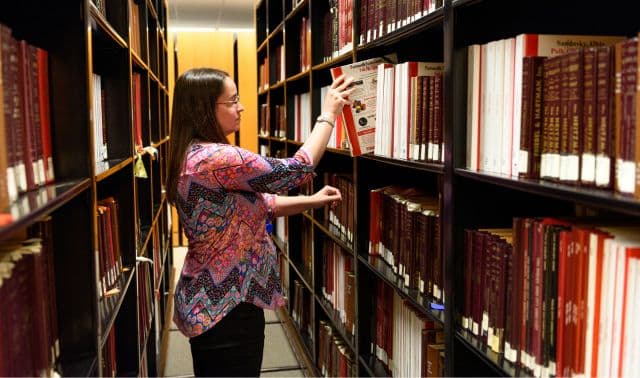FULL BLOOM
Thousands of visitors frequent our nation’s capital to see the beautiful pink and white blossoms that usher in springtime. But you may not know the history behind this lovely spectacle: In 1912, as a thank-you for America’s support during the 1905 Russo-Japanese War, Japan gave a shipment of 3,020 Yoshino cherry trees to First Lady Helen Herron Taft, who had them planted around the Tidal Basin and at several national landmarks. The National Cherry Blossom Festival, held since 1935, has become a beloved multicultural celebration. Events run from March 25-April 8. On March 31, see the festival parade and the Sakura Matsuri Festival, a street fair teeming with Japanese culture. Be sure to reserve parade tickets in advance. See <www.gwjapan.com/cherryblossom> for details.
branching out
No Junk in This Attic
Like many of us, the New York Historical Society had a lot of its old things stored away because there just wasn’t room for them. With a new 21,000-square-foot fourth-floor renovation, however, the society was able to bring 40,000 works of art and artifacts out of storage and into the public eye. Opened last fall, the Henry Luce III Center for the Study of American Culture is like a national attic in which you can explore paintings, sculptures, furniture, tools, decorative objects, Tiffany lamps and other objects from the 1600s to the present. Items come from everyday life — such as silverware and fans — as well as from the rich and famous, such as the bed George Washington slept in at Valley Forge. For details, see <www.nyhistory.org/luce/> or call (212) 873-3400. — Susan Wenner
HOME FOR HISPANIC HERITAGE
Fifteen years in the making, the National Hispanic Cultural Center recently opened its doors in Albuquerque, NM, to offer programs developed by top Hispanic artists, educators, scholars and business executives. Located on a 16-acre site along the Rio Grande, the center includes a research and literary arts building (stocked with genealogical volumes) and a technology/visual arts complex. A performing arts complex is planned for completion later this year or in early 2002. See <www. museums.state.nm.us/hcc/hcc.html> or call (505) 246-2261 to learn more. — Susan Wenner
Stretching Its Web
The expanding web of MyFamily.com now encompasses a new interactive community called “Family Life” and a top Web destination for baby boomers. Family Life is a network of sites — including MyFamily Money, MyFamily Kitchen, MyFamily Health, MyFamily Heritage and MyFamily Travel — offering tips and information from experts and families. MyFamily Money, one of the first sites to go live, focuses on managing family finances and topics such as home ownership, saving, debt management and retirement.
Already an online genealogy giant, the company recently acquired Third Age <www.thirdage.com>, a site offering information and resources for people over 40. MyFamily.com, which also owns Ancestry and FamilyHistory.com, bought Roots Web last summer, and added the search engine Ah-ha.com to its search arsenal in late December. — Susan Wenner
Columbia, Tennessee
STUBBORN CELEBRATION
The much-maligned mule is finally getting its due. Mule Day, one of Tennessee’s “great traditions,” honors the animals for the valuable role they played in the history of American agriculture. The royal mule procession has been an annual event since 1934. This year, from April 5-8, the festival features the parade, a mule competition, an arts and crafts show, a flea market, nightly square dancing and mules for sale. See <www.muleday.com> or call (931) 381-9557.

WINDSOR, CONNECTICUT
SOMETHING FISHY
When a small band of settlers from the Plymouth Colony migrated to Windsor and displaced the original Dutch settlers in 1633, they discovered the bounty of the Connecticut River. In addition to fertile soil for tobacco, each spring masses of shad, a type of herring, swim upstream to spawn in the shallow waters of the river’s tributaries. Eventually, the river became polluted and catching the shad with large nets depleted the supply of fish. To raise awareness and celebrate the town’s history, the Windsor Rod and Gun Club started Shad Derby in 1964. It evolved into a month-long festival, April 20-May 20 this year, that culminates with a parade and activities on the community green. Townspeople and visitors enjoy fishing and contests, and the Shad Derby Queen reigns over several events. For visitor information see <www.cnctb.org> or call (800) 248-8283.
LAKE CHARLES, LOUISIANA
AHOY, MATEYS
If you go down to New Orleans for Mardi Gras and Jazz Fest, head west along the Gulf Coast for a swashbuckling good time on Lake Charles. Legend has it that the contraband treasure of Jean Lafitte, a well-known pirate who plundered in that area around 1815, is buried somewhere in the adjacent bayou. Contraband Days pays tribute to the pirates who A once traversed the area’s lakes and rivers. From May 1-13 enjoy daily events and contests, including arm wrestling and crawfish-eating competitions. Also, a boat show and parade feature sailboats and pirate ships; townspeople dress up as the marauders. Find details at <www.contrabanddays.com> or call (337) 436-5508. Information is also available through the Southwest Louisiana Convention and Visitors Bureau, (800) 456-7952.
branching out
SAVING EX-SLAVE RECORDS
Congress may have had trouble agreeing on a national budget, but the House and Senate both unanimously approved a $3 million request to save the 135-year-old records of ex-slaves. More than a million pages from the Bureau of Refugees, Freedmen and Abandoned Lands (better known as the “Freedmen’s Bureau”) are to be microfilmed and catalogued at the National Archives and Records Administration. The Freedmen’s Bureau was established after the Civil War to help free blacks make the transition from slavery to freedom. The records, which span 1865 to 1872, will give genealogists more data on slaves, slave owners and others who dealt with former slaves. For seven steps to get started tracing your slave ancestors, see the February 2001 issue of Family Tree Magazine.
– Susan Wenner
Room to Grow
New View of Civil War
A Union soldier’s watercolor paintings and diaries capturing unprecedented views of the Civil War finally have been reunited. For nearly a century, Pvt. Robert Knox Sneden’s tales of his journey through the war lay in dusty obscurity. His drawings and paintings were held in a Connecticut vault; his notes and journals were being kept in storage in the Arizona desert. A combination of luck and researchers’ determination brought Sneden’s body of work to light, delighting Civil War buffs. Now these important documents are displayed in an illustrated memoir, Eye of the Storm: A Civil War Odyssey (Free Press, $37.50) and in a traveling exhibition.
To learn more about his works and their rediscovery, see the multimedia presentation at <www.journale.com/eyeofthestorm/> or visit the traveling exhibition in a town near you:
Atlanta History Center, through March 20
Chicago Historical Society, May 30-Sept. 30
Huntington Library in San Marino, Calif., Oct. 22-Jan. 24, 2002
– Susan Wenner
PROMONTORY, UTAH
RAILROAD CROSSING
On the famous spot where the Transcontinental Railroad was joined in 1869, the driving of the Golden Spike is recreated annually on May 10. When the Union Pacific and Central Pacific agreed to meet, California Governor Leland Stanford had the honor of symbolically joining the two lines. This year is the 50th anniversary of the re-enactment, accompanied by a full day of activities, including a demonstration locomotive run and musical entertainment, all at the Golden Spike National Historic Site. Promontory is just a spur of the main line today, but railroad history is on permanent display in its museum. Go to <www.nps.gov/gosp> or call (435) 471-2209 for more details.
WILLIAMS, ARIZONA
MOUNTAINOUS CELEBRATION
In his namesake town, legendary trapper and frontiersman William Sherley Williams is more highly regarded than, say, Davy Crockett or Paul Bunyan. Rendezvous Days, a festival held over Memorial Day weekend, May 26-28, celebrates the town’s western heritage with a black-powder shoot and competition, among other similarly themed festivities. Dressed in traditional trappers’ garb, the locals on Trader’s Row sell authentic 1840s goods — animal skins, horseshoes and handmade soap. The resort community serves as one entrance to Grand Canyon National Park, so plan an extended stay. Call (800) 863-0546.
From the April 2001 issue of Family Tree Magazine













